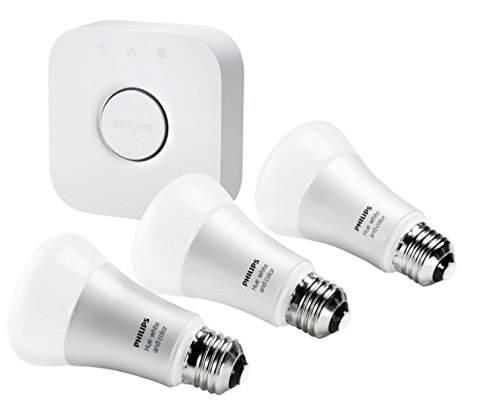Despite the fact that we’re now cruising full-time, I probably get 5-6 emails a week from people who want to learn more about living on a boat, especially in New York City. Since being covered in Forbes, I've gotten a boatload (pun intended) of people asking the same questions, so I figured a blog post was in order!
There’s a good reason that not that much information is publicly available about this topic: living on a boat in the New York area as your full-time, permanent residence is, as far as I've been able to tell, technically illegal at every marina... so, intrepid aspirational liveaboards, read along at your own risk.
However, if you have even an inkling that you'd like living on a boat, in NYC or otherwise, you definitely should try it! There are very few of us who actually get it together to do it, and no one I know has ever regretted it.
With that said, come with me and I’ll drop some knowledge on ya about how to do it.
Don't live on a boat to save money.
Every boat is different and living on a boat can be an extremely economical way to live in an expensive city. But don’t discount the costs associated with purchasing and maintaining a boat. Every repair you make will cost you thousands instead of hundreds of dollars. That’s why $1000 is affectionately referred to as a “boat buck.” So, consider that whatever you save in rent will likely go back into boat maintenance in the long run. There are tons of blogs that outline their monthly or yearly costs of living and cruising on boats. Mark Nicholas' classic on being a liveaboard also outlines the general costs of living on your boat.
Look for marinas with discretion.
No marina in the NYC area will say they accept liveaboards. Look instead for marinas with "wet winter storage" or in-water storage, and for marinas who accept "frequent stayaboards".
Many marinas accept stayaboards, but you need a separate permanent address (P.O. box is fine) for legal and tax purposes, and in emergency situations, another place to go. You don’t have the same rights as a renter in an apartment. Your slip doesn’t count as your home.
In short, it's accepted by many marinas to stay full-time but not quite legal, though many people have done it for years and years.
This can be an inconvenience at times -- if they have to fix the water or facilities they work under the assumption every tenant doesn't live there full time, even if they know they do, so you have to make alternative plans. This wasn’t an issue for us but it's different at every marina.
There are a number of marinas in the same canal, so it's up to you to choose cost and amenities over convenience.
You'll have to call around to see about current policies. Lots of people live part or full-time in marinas around New York, but you have to be discreet and respect the rules of the marina hosting you. We've been called out for NOT being discreet, by even noting that we've lived on a boat in NYC, without ever disclosing location. (Hey you, aspiring La Vagabonders, don't even consider starting a YouTube channel if you want to live aboard in NYC.)
Liveaboard slips are very marina-by-marina. Some people care a lot, and some people don't care at all if you stay all year. Look for places that provide bubblers (sort of like giant versions of the kinds find in aquariums) so that the water around your boat doesn't get iced over.
As far as more general information, I'd really recommend Mark Nicholas' classic on being a liveaboard as well as Facebook groups on the subject. Sailing and Cruising has a lot of info on living aboard and there are about 5 million blogs on living aboard -- the easiest way to start getting to know all of them is to start liking them on facebook (try ours -- Sail Me Om and Sailing Chance, who is also in New York) and you'll get suggested more.
Water.
Remember that when you live on a boat you aren't connected to a water or sewage system.
In summer, water is a no-brainer, just fill up your tank every so often from a hose right at your slip. In the winter, water is annoying but doable. You'll get an extra long hose, or some docks link their hoses together and they fill directly from pumps on land. This is annoying. Sometimes people will leave water in the hose and it'll freeze and you have to do ridiculous things to unfreeze it (like taking 200 feet of hose into the shower to melt it, true story) but totally doable. If you have large water tanks it's a non-issue (we don't, and it was still only an every-two-week affair for us.)
Pumpouts.
In every marina we looked at, they didn’t have pumpout services for heads in the winter (as in, pumps to clear your toilet tanks). Your alternatives for this include: don't use your head at all, or only do #1 and open it straight into the river. Use marina bathrooms for everything else. You can also get a composting head (toilet), which renders this a nonissue. Note that especially in winter, you shouldn't plan on showering on your boat because of the moisture, so you'll be in those bathrooms regularly. Also, most FT boaters keep pee-only heads anyway, because it dramatically reduces smells on your boat. There's the gross explainer on that.
Know your boats and their capabilities.
Or at least what kind of boat you hope to live on. Powerboats provide a lot more space but tend to be more expensive to travel on than sailboats. Sailboats tend to have less space, but after the '70s era-runs, they become much roomier inside.
Note that houseboats are neither sailboats nor powerboats. They are meant to be in one space and not move. Just because you live on your boat, this doesn't mean your boat is your houseboat. In any case, basically every boat is expected to have a working engine, and you're expected to have insurance to keep it in almost any marina. Your insurance rates may vary wildly depending on the condition of your boat. Also, don't expect it to be okay for you to tow a derelict boat into a marina to live on. It won't be accepted.
What size boat can you live on?
There's no rule for this, but we've found that the smaller the better. 37 feet is enough for us two, even though we thought that would be too small when we started. Many people make the mistake of buying big and regret the dock fees (charged by foot) and maintenance fees (which get infinitely more expensive as you go bigger). So if you're not sure, try out a friend's boat for a couple of days or Airbnb a boat of the size you're looking for to see if it's right for you.
That's it! What other questions you got? I'm happy to answer them.





















